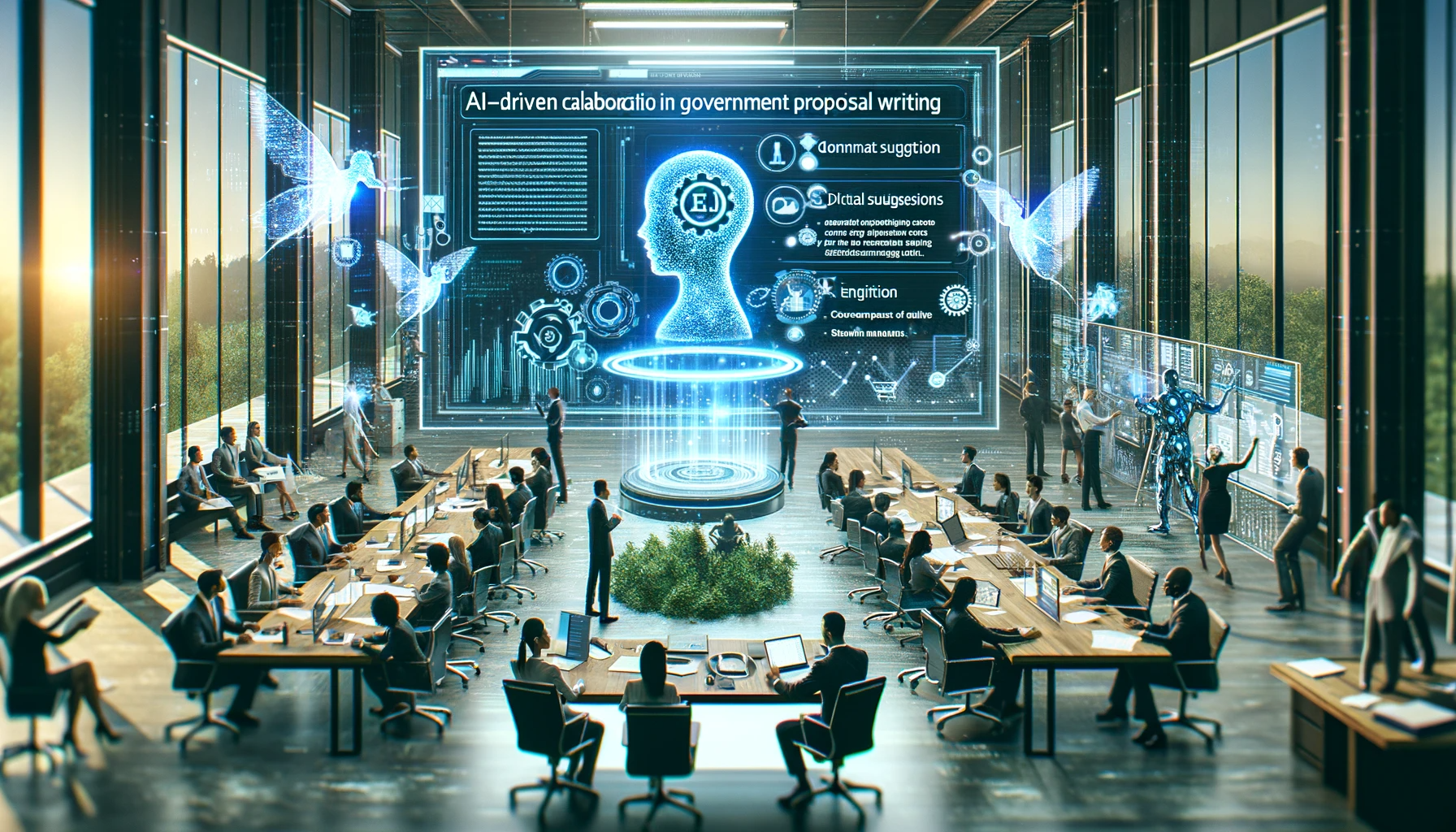AI-Driven Collaboration in Government Proposal Writing


Crafting a government proposal is a pivotal step in securing a contract. For a government proposal manager or a technical writer, understanding the complexities involved in creating an effective proposal is critical. These complexities include strict deadlines, intricate requirements, and the necessity for teamwork across various expertise levels. The process is demanding and involves thorough research, analysis, and documentation, presenting your organization's strengths and suitability to fulfill the solicitation's demands. It's imperative to employ a strategy that enhances efficiency and accuracy while reducing potential errors.
AI-assisted collaborative writing has become an innovative approach for enhancing the proposal creation process. Through sophisticated algorithms and machine learning, AI tools facilitate better teamwork and reduce writing errors and inconsistencies. This approach allows for quicker production of high-quality proposals without compromising detail or quality.
AI is seen by some as a challenge to traditional writing practices, but many view it as an avenue for growth and innovation. AI's ability to quickly analyze vast data sets opens up new collaborative opportunities for writers from various disciplines, offering a progressive solution for enhancing government proposal writing processes and staying competitive in a dynamic marketplace.
II. AI's Emergence in Proposal Creation
Artificial intelligence (AI) has recently become a transformative force in many industries, including the realm of government proposal creation. Innovations in AI-driven tools, like SamSearch.co, are revolutionizing the proposal development process, supported by accessible models such as ChatGPT and Google Bard.
Key tips for utilizing AI in proposal generation include:
-
Technical queries: Engineers, program managers, and product managers are often occupied and hard to reach during proposal development. Instead of directly consulting them, you could use GPT platforms (chat.openai.com, bard.google.com) to ask, "explain [topic] in technical detail". The initial drafts produced can then be refined by your experts, making the process faster than starting from scratch.
-
Unified Voice: AI tools can analyze and unify large amounts of text, resulting in content that is more consistent and fluid. Test this by instructing the model to "improve flow" or make stylistic changes like "use active voice" or "shift to third person". Remember to consider the input limits of these models.
-
Condensing Content: When facing page limitations, AI can help condense content. Input larger sections and instruct it to "make this more concise". While it may not be perfect, it can effectively reduce content volume while maintaining essential points.
III. Tools at Your Disposal
Ready to start with AI in proposal writing? Here are some tools that can enhance your workflow:
-
SamSearch.co: Specializing in government proposal writing, SamSearch.co streamlines what can be a laborious process. Unlike general-purpose GPTs, SamSearch.co automates many tasks, enhancing the overall efficiency of proposal generation. With an intuitive interface and advanced AI features, SamSearch.co is a formidable tool for producing top-notch government proposals.
-
ChatGPT: ChatGPT, with its state-of-the-art AI capabilities, is invaluable in creating cohesive, comprehensive, and convincing government proposals. It excels in generating relevant content and refining existing material, ensuring a high-quality final product.
-
Google Bard: Google Bard, although less advanced than some options, provides basic content generation and text suggestions for government proposals. It may require additional manual editing to ensure a polished and compelling final proposal.
V. Addressing Potential Issues
Integrating AI into proposal generation processes has its benefits but also raises security and confidentiality concerns. Opt for established AI tools with robust security features. For example, platforms like ChatGPT and Google Bard use input data for model refinement, so discretion is advised. Tailored platforms like SamSearch.co are designed with data protection, making them a safer choice as you advance in AI integration. Remember, online tools often cost your data, so choose judiciously.
V. Final Reflections
The future of government proposal generation is inevitably linked with AI technology advancements. Embracing AI tools and techniques can transform your proposal management process, helping you overcome challenges and secure more contracts.
Staying updated on AI technological developments and adapting accordingly is crucial for proposal writers and managers. This proactive approach will enable you to effectively navigate the evolving landscape of government proposals, enhancing the success of your team and organization.